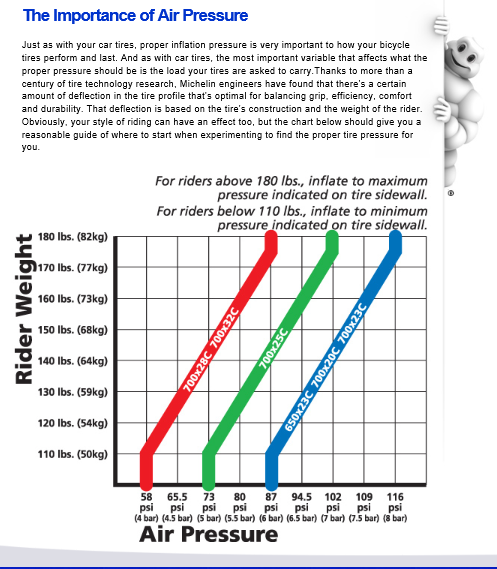By RALPH VARTABEDIAN
Times Staff Writer
Question: When on vacation, I frequently drive long distances at high speeds. I never seem to be near an air pump in the morning to check the tires when they are cold. Is there a rule of thumb for how long to wait before the tires are cool enough to check the pressure? Is there any rule for translating a cold pressure to a hot pressure? For example, if I measure the pressure cold in the morning and need three pounds, can I just add three pounds later when they are hot?--C.R.
Answer: The rule of thumb is that you need to wait three hours with the car parked before the tires are cool enough to get an accurate pressure reading. In addition, you should try not to drive more than one mile in getting to a pump if you want to recheck the pressure when you add air.
These rules may sound difficult, but there are some easy short cuts. If your tire pressure is a bit low in the morning, you might consider adding one or two extra pounds at an air pump at the end of the day. Then, the next morning, when the tires are again cool, you can adjust the pressure exactly by letting air out of the tires.
I am not aware of any rule of thumb for translating a cold-pressure rating to a hot-pressure rating. If you are down three pounds of pressure when the tires are cold, then you could probably come close to the right pressure by adding that amount when the tires are hot. Normally, tire pressure rises five pounds per square inch after sustained freeway driving. If you do add air when the tires are hot, you should probably double-check the pressure the next morning.
Q: My 1982 Honda Accord with an automatic transmission occasionally experiences violent shaking upon starting when cold and at other times when it is restarted. In both cases, the car shakes strongly for about five minutes. My Honda does this more frequently when parked on a hill. --M.M.
--M.M.
Q: My 1983 Honda Accord vibrated when backed out in the morning. It was so violent that things fell off the dashboard. It occurred for several minutes and then disappeared. I was so frightened by this problem that I sold the Honda and decided never to buy another one.--D.J.R.
A: Honda has identified a defect in the car that would account for these problems. But there also other possible causes.
The violent vibration and shaking are most likely caused by severe misfiring of one or more cylinders. The cause could range from fouled spark plugs to a problem in the electronic ignition system.
Another possible cause is described in Honda service bulletins regarding an overly rich fuel condition that occurs on restarting a hot car. The rich condition causes misfiring and severe shaking.
The rich condition results when a hot engine is shut off on a hot day. The heat retained inside the engine compartment causes gasoline to expand inside the fuel line and carburetor, causing what is known as percolation. The fuel pressurizes, floods the carburetor float bowl and then spills into the intake manifold.
The fuel pressurizes, floods the carburetor float bowl and then spills into the intake manifold.
When the car is restarted, the intake manifold is full of gas and causes the engine to run erratically for a few minutes until it is cleared out. Honda’s solution to this problem has been to offer a system that operates the electric cooling fan under the hood for a few minutes after the engine is turned off. This keeps the fuel cool enough to prevent percolation.
Possibly, the two readers’ problems are related to this condition, except that the fuel sits around inside the intake manifold until morning. A rich condition doesn’t usually cause problems in a cold engine, but with the choke on and the extra fuel in the manifold, this could be the cause.
I got a low tire pressure warning in my car but I keep forgetting to check it until I’m already driving. Can I check my tire pressure right when I get out of my car? How long do I have to wait to check my tire pressure after driving?
Liz Jenson · Answered on Feb 07, 2022
Reviewed by Shannon Martin, Licensed Insurance Agent.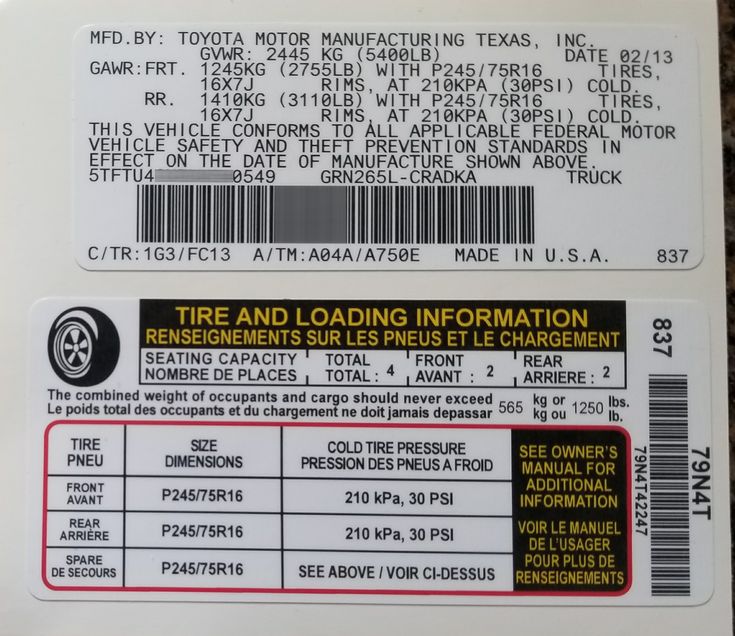
Great question! If you’ve just driven your car, you should wait for three hours before checking your tire pressure. This is because the heat from the friction caused by driving can affect tire pressure, meaning you won’t get an accurate reading if the tires aren’t cold.
In the colder months, tire pressure tends to drop with the temperature. It’s possible that you’ll just need to fill up your tires at your local gas station in order to fix the low tire pressure light in your car.
If there’s something more serious going on, however, it can help to have a good roadside assistance policy to help you. Jerry offers customers a modern roadside assistance membership. Along with traditional benefits, you get Uber-like tracking for the status of your service and the ability to contact your service provider directly for as low as $4.16 a month.
Hopefully, you can check your tire pressure soon and get some air added if necessary!
MORE: How to check and add air to car tires
Car TiresDriving Tips
View full answer
WHY YOU CAN TRUST JERRY
Jerry partners with more than 50 insurance companies, but our content is independently researched, written, and fact-checked by our team of editors and agents. We aren’t paid for reviews or other content.
We aren’t paid for reviews or other content.
Browse More Content
U-Joint Lubrication Inspection Cost Estimate
What Is A Reset Maintenance Reminder System?
Loss of Power Inspection Cost Estimate
Tie Rod End Replacement
What To Do If Your Fuel Door Won’t Close
Subaru Legacy Outback 3.0R Ll Bean Insurance Cost
Toyota Sienna Se Insurance Cost
Lincoln Mkz Reserve Insurance Cost
Buick Lacrosse Essence Insurance Cost
Ford Focus Sel Insurance Cost
Marion Car Insurance
Bloomfield Township Car Insurance
Spout Spring Car Insurance
Vineyard Car Insurance
Thomasville Car Insurance
I just got a new Jeep, and I’d really love to try off-roading. I was wondering, though, if I should make some modifications first. Specifically, I’d like to know if a Jeep Renegade lift kit is a smart investment or if I should just leave it as-is.
I was wondering, though, if I should make some modifications first. Specifically, I’d like to know if a Jeep Renegade lift kit is a smart investment or if I should just leave it as-is.
Heather Bernhard
May 09, 2022
I need to rent a car and recently heard about Turo. Are New Yorkers able to rent using Turo and how does it work?
Sean Boehme
Feb 07, 2022
How many points will a DUI add to my California driving record? I’ve been trying to keep track of any points that I get so that I can get rid of them with classes over time.
Liz Jenson
Feb 07, 2022
Browse All Questions
Get the rundown on your 2007 Mustang bolt pattern—and figure out how you can measure it for yourself.
Melanie Krieps Mergen
Oct 20, 2022
Joe Biden lauded industry electric vehicle investments at the North American International Auto Show in Detroit.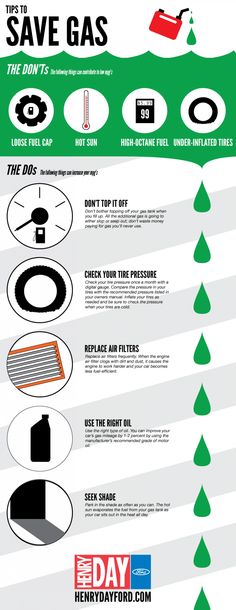
Andrew Kidd
Sep 30, 2022
A 2007 Honda Odyssey has a gas tank size of 21 gallons, feeding into a 3.5-liter V-6 engine.
Cameron Thiessen
Aug 09, 2022
driving laws
Homeowners insurance
damage claims
Loan Discounts
Water Damage
Pickup Trucks
Car Insurance Premiums
Young Drivers
Auto insurance
Car Down Payments
Mercedes-Benz
Metromile
Car Sharing
Artificial Intelligence
homeowner insurance
Car Repair
Hybrid Cars
Toyota
negligent driving
misdemeanor
Tennessee
moving
Massachusetts
New Cars
Penalties
Insurance Industry
Manual Cars
No long forms
No spam or unwanted phone calls
Quotes from top insurance companies
Find insurance savings — it's 100% free
Toyota
Hyundai
Mercedes-Benz
Subaru
Chevrolet
Mitsubishi
What should be the pressure in the tires of the car? Does it need to be adjusted and what will happen if the pressure is changed in one direction or another?
Two friends conversation:
- Hello, I lowered the wheel!
— Absolutely?
- No, only from below . ..
..
Humor from the Web
Let's start with platitudes. The pressure must be as specified by the vehicle manufacturer. And since the average modern driver usually does not have such information, especially for him, a "cheat sheet" with the necessary numbers is hung on the middle pillar on the driver's side or on the gas tank hatch cover.
A relatively rare solution: the "reminder" is located on the gas tank cap.
A relatively rare solution: the "reminder" is located on the gas tank cap.
An important point: pressure should be measured only on cold tires. By the way, especially for pedants: cold tires are those on which the car has been without movement for at least 5 hours.
This "cheat sheet" nestled on the driver's door. An example of how tire pressure recommendations change depending on tire size.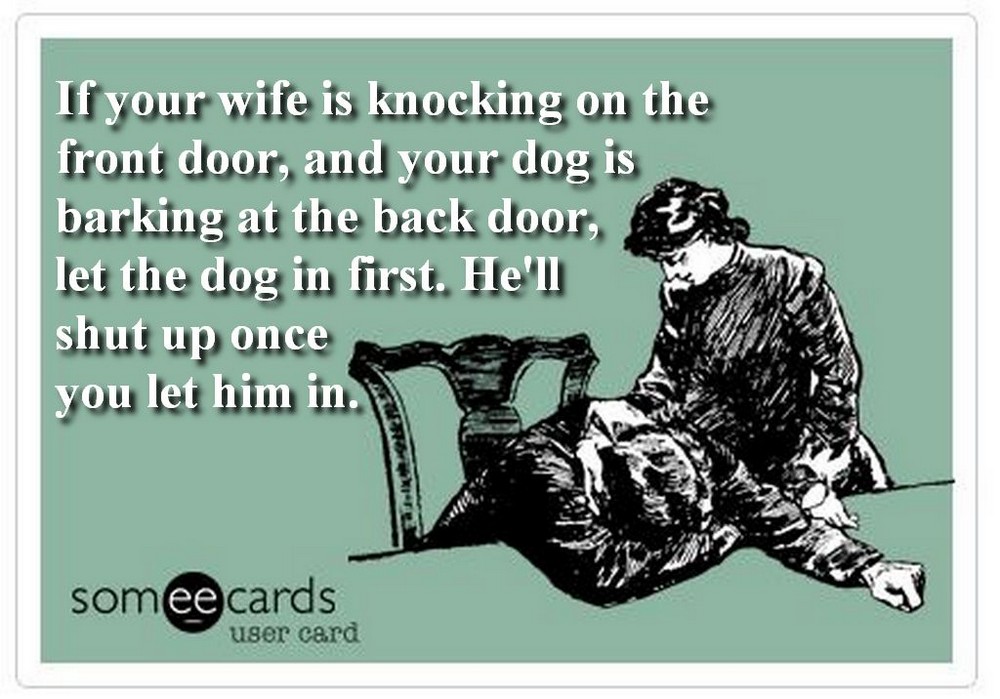
This "cheat sheet" nestled on the driver's door. An example of how tire pressure recommendations change depending on tire size.
Since car manufacturers allow the use of tires of different sizes, the pressure may also be different. In addition, the pressure in the front and rear tires has the right to both differ and be the same.
And here there is no difference in recommendations: what is in front, what is behind is the same.
And here there is no difference in recommendations: what is in front, what is behind is the same.
Related materials
Seasonal tire change: everything car owners need to know
Reduced pressure leads to an increase in tire deformation, more heating during wheel rolling, accelerated wear of the outer tread tracks. Perhaps even a violation of the integrity of the frame.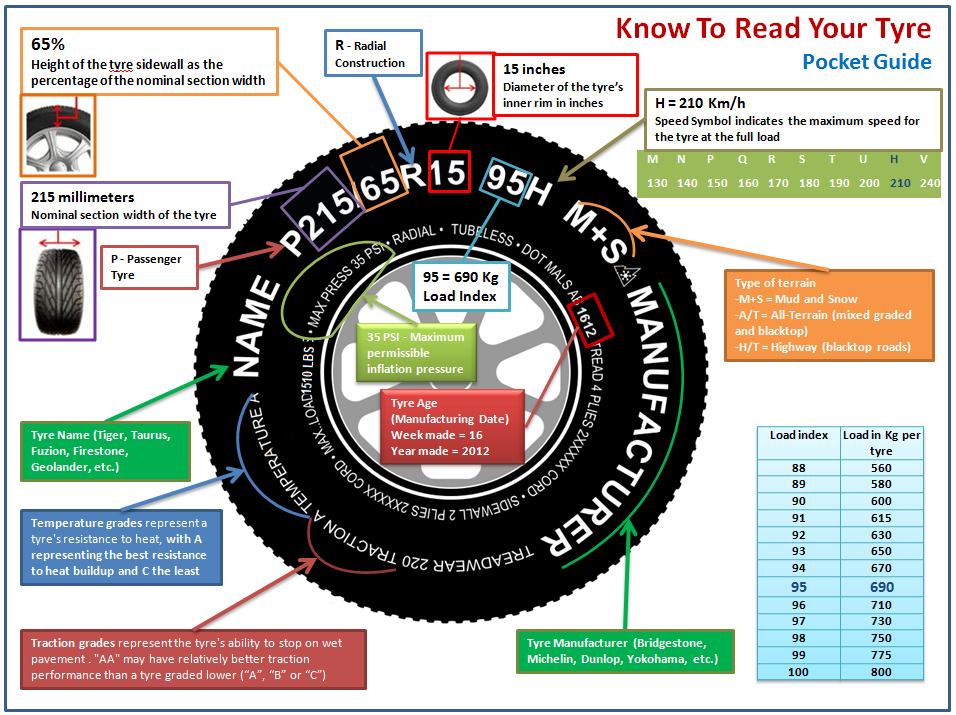 As a result, fuel consumption increases. If you hit a hole in the road, the likelihood of damage to both the disk and the tire is higher.
As a result, fuel consumption increases. If you hit a hole in the road, the likelihood of damage to both the disk and the tire is higher.
Increased pressure is an overstrain of the cords, increased wear of the middle part of the tread. In addition, when driving on a bad road, the shocks that are transmitted to the suspension and body will become more noticeable for riders. When hit in a pit, the likelihood of a tire burst increases.
Uneven pressure on all four wheels is the worst thing! At the same time, the car, while driving, inevitably leads the wheels with lower pressure to the side - in fact, sideways movement begins.
Tube tires of the past required a weekly check, especially before the advent of butyl tubes. Then the pressure began to be checked less often, and nowadays, as a rule, they are limited to visual inspection.
Tube tires of the past required a weekly inspection, especially before the advent of butyl rubber tubes. Then the pressure began to be checked less often, and nowadays, as a rule, they are limited to visual inspection.
Then the pressure began to be checked less often, and nowadays, as a rule, they are limited to visual inspection.
In a good way, you need to check the tire pressure at least once a month. And before a long journey - just a must.
Related materials
Budget Tire Compressor Test: Wrong Bees
The air pressure in an enclosed space changes by approximately 0.1 bar for every 10 degrees of temperature change. This allows, having installed summer wheels in April, not to worry about the pressure in them until the end of August, when the air temperature begins to drop. Having pumped up the wheels at the end of summer, you can already reach the seasonal shift. But having installed winter tires in October, with the first frosts, you should check the pressure a couple more times: when the temperature drops to minus ten, fifteen, and when it goes over minus twenty. But from the middle of winter until the moment of changing the wheels to summer ones, there is again a period of relaxation.
Electronics are increasingly thinking for us. Now, a tire pressure monitoring system is being installed on parts of production cars. Moreover, some simply read the wheel speeds through the ABS sensors: after all, a flat tire rotates faster, since its radius is smaller than that of inflated wheels. There are also sensors that evaluate the amount of air pressure and send information via radio to the "brains" of the car. Such devices can also be purchased separately: sensors - in the wheels, and the receiver - in the car.
By the way, a lot depends on the road you are going to take.
The operating instructions supplied with the vehicles indicate that it is recommended to increase the pressure by 0.2-0.3 bar before driving for a long time on expressways. We advise you to follow these recommendations on all cars: it will not get worse.
The operating instructions supplied with the vehicles state that it is recommended to increase the pressure by 0.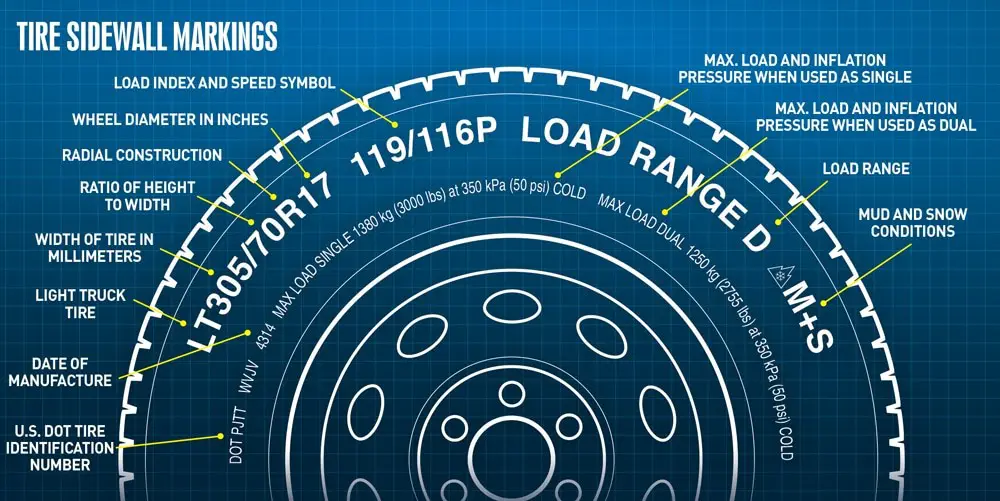 2-0.3 bar before driving for a long time on highways. We advise you to follow these recommendations on all cars: it will not get worse.
2-0.3 bar before driving for a long time on highways. We advise you to follow these recommendations on all cars: it will not get worse.
I don’t want to discuss overload: this, you see, is not the case. But, unfortunately, many deliberately overload the car several times a year, not only stuffing the interior and trunk to the eyeballs, but also attaching a trailer, which additionally loads the rear wheels of the tractor. In such cases, we advise you to increase the pressure in the rear tires by at least 0.2–0.3 bar. Tires will only thank you.
If you doubt the accuracy of your pressure gauge, then we advise you to check it immediately after leaving the tire shop, where you were set the obviously necessary pressure, to measure it with your own measuring device (separate or as part of the compressor). So you determine whether your pressure gauge is "lying" a lot. For the future, right on the dial, you can put a mark of the correct value.
Of course, it is better to have your own, known to be correct pressure gauge, but such a toy is not cheap.
Of course, it is better to have your own, known to be correct pressure gauge, but such a toy is not cheap.
If terrible ice caught you on summer tires, say, in the country, and you need to drive some distance along an absolutely icy road by any means, then you should reduce the tire pressure to approximately 1.6 bar. Is it bad for tires? Yes. But an accident will cost more. In addition, in such a situation, one does not have to wait for high speed, and overheating of tires at near-zero temperatures most likely will not happen.
Everyone knows what caused the excellent maneuverability of Soviet tanks? That's right: wide tracks, that is, low pressure on the ground. We, having an ordinary, non-all-wheel drive car, are also able to provide it with a similar cross-country ability. If the wheels of the car sink into sand, snow or sticky mud, then it makes sense to lower the tire pressure. And not only driving, but also driven wheels.
If the wheels of the car sink into sand, snow or sticky mud, then it makes sense to lower the tire pressure. And not only driving, but also driven wheels.
We know from experience that you can often get out of the "black spot" by reducing the pressure to 1.2 bar.
We know from experience that it is often possible to get out of the "black hole" by reducing the pressure to 1.2 bar.
In a very critical situation, if you know that you have a fairly narrow disc and a relatively wide tire (such a wheel has a lower chance of self-disassembly), you can reduce the pressure to 1.0 bar.
Stalled on wet grass? Try to relieve pressure.
Stalled on wet grass? Try to relieve pressure.
Pressure reduction is also useful in other cases - for example, to overcome diagonal hanging. If you reduce the pressure in the wheels on which the car rests, their height will decrease and there will be a chance to “hook” on the suspended wheels.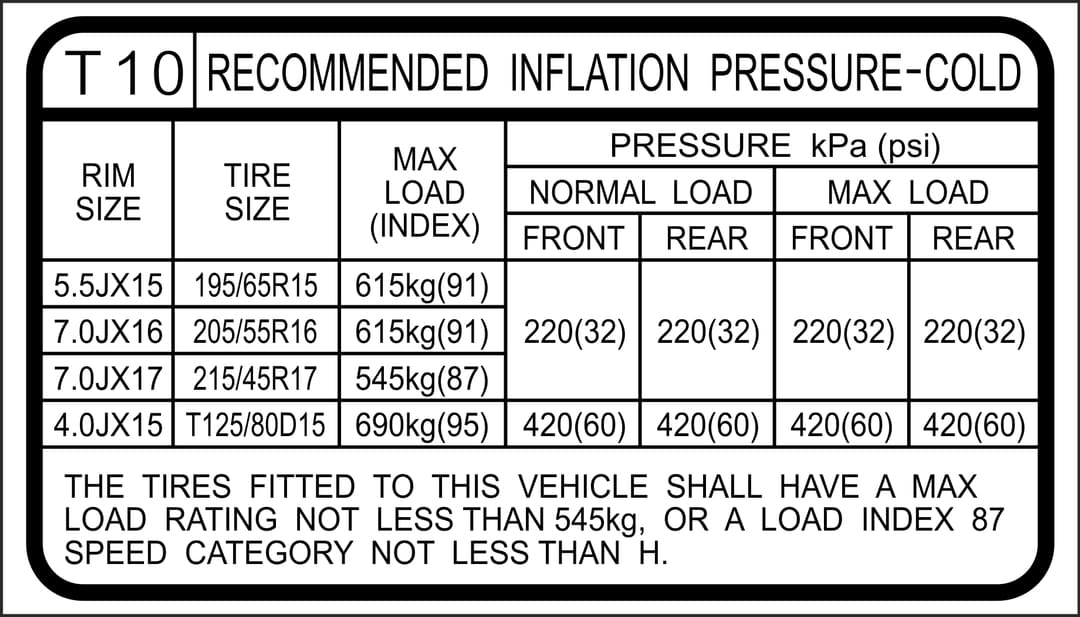 Of course, if the car has already laid down on the bottom, then it is too late to reduce the pressure - this will only interfere.
Of course, if the car has already laid down on the bottom, then it is too late to reduce the pressure - this will only interfere.
A concrete example of the effect of pressure on flotation. In this case, the pressure is very low, and the contact patch of the wheel with the coating is much larger than that of a conventional car.
A concrete example of the effect of pressure on patency. In this case, the pressure is very low, and the contact patch of the wheel with the coating is much larger than that of a conventional car.
In general, the pressure in tires, as well as in vessels, is better to keep normal. Any deviation has its negative consequences. Tell us, have you ever had to adjust tire pressure to improve flotation?
Tire pressure: your norm
Tire pressure: your norm
90,000 what pressure should be in tires in winterFresh number
RG-needle
Rodina
thematic applications
Union
Fresh number
Curriculum:
Cars
02/22/2021 14:03
Boris Zakharov
Do I need to inflate the tires in winter? Many drivers are convinced that it is necessary not to pump up, but, on the contrary, to etch the air in order to increase the contact patch. So which of the two solutions is correct?
So which of the two solutions is correct?
iStock
There are several factors to consider when choosing tire pressures in winter. Primary is the temperature overboard. The fact is that with a decrease in air temperature below zero, the pressure in the tires drops in the range from 0.1 - 0.3 atm. Thus, if the tire is inflated to 2 bar in a warm garage, in severe frost this figure can drop to 1.7 bar.
Such sagging tires, by the way, can be seen on many cars in severe frosts - pay attention! In other words, the passport pressure in the tires indicated in the manual or on the plate on the body are correct for a "cold" tire. Therefore, it makes sense to check the pumping level "on a cold" - in the morning, in frost. In this case, you can set the pressure in accordance with the recommendations of the automaker. And vice versa. Keep the car in the garage in the cold, do not be lazy with a large minus overboard, increase the value by about 0.2-0.3 bar for each wheel.
The second point to consider when inflating tires in cold weather is where and under what conditions you plan to drive. If you plan to move at high speeds along the highway, and even in the company of passengers, then it will not be superfluous to increase the pressure in the tires by the same 0.2 - 0.3 bar.
If you plan to move at high speeds along the highway, and even in the company of passengers, then it will not be superfluous to increase the pressure in the tires by the same 0.2 - 0.3 bar.
However, this value should not be exceeded too much. After all, seriously pumped tires in winter are no less dangerous, since the contact patch with the road surface will decrease, the elasticity of the polymers will decrease, the handling will deteriorate, and rubber wear will increase. And vice versa - you plan to trudge in a snow rut off-road, you should not pump up the wheels. Moreover, under certain circumstances (for example, when driving in deep snow), it makes sense to trim tires by 0.5 bar in order to increase traction and, accordingly, patency.
Also make it a habit to check your tire pressure regularly, at least once a week, in winter. For this reason, special attention should be paid to this issue. The difference in pressure in the wheels on a slippery road can literally go sideways to you.
Deviations from the regulation as early as 0.3-0.5 bar for at least one wheel can cause skidding and problems with the return of the car to the course. Even if you are not armed with a pressure gauge, just listen to the behavior of your car.
If one of the wheels is under-inflated or over-inflated, the car may move to the side, and it will be worse to keep on a high-speed straight line and in turns. However, the same karting can be given by rims clogged with snow, and therefore have lost their original balance. Therefore, do not be too lazy to go to the sink, spill the snow-covered disks with water, and at the same time check the pressure in the tires.
What happens if you ignore these recommendations and drive in cold weather with under-inflated tires? In addition to increased wear and excessive fuel consumption, you will experience a deterioration in handling. The car will be worse to keep a straight line, "float" when changing lanes, and in sharp turns the wheels will begin to "break", which at least worsens handling and, at the most, provokes drifts from the trajectory.